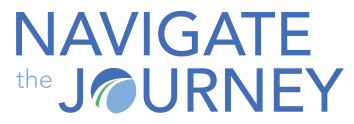Understanding Your Blind Spots
A friend was recently recounting a story I’ll never forget: He was driving on the highway with his wife and three boys on their way home from Christmas break. His wife’s family is from Mid-Michigan and their home is in Chicago, which means winter travel can get dicey, especially in northern Indiana with its infamous bands of lake-effect snow. On this particular day, it was snowing heavily, making the driving conditions treacherous. He said that he’ll be the first to admit that being responsible for his family’s safety in such uncertain conditions was nerve-wracking. The trip was proceeding relatively smoothly with about thirty miles to go when—all of a sudden—a tractor trailer cut off our vehicle and nearly sent them into a ditch. The whole experience was terrifying. Just the day before, he’d read about a 60-car pileup on the same stretch of road. It was easy to be angry at the driver that almost caused a major accident. But, in the moments following this ordeal, he realized the driver of the tractor trailer simply did not see his car. He was in his blind spot and given the conditions, the tractor trailer driver had really had no intentions of cutting my friend off; he too was trying to get to his destination safely. The thing with blind spots is that you forget they exist until they suddenly appear having caused or almost caused irreparable damage. In leadership, blind spots can be equated with a lack of self-awareness and its various manifestations. A driven, vision-focused leader consumed with success might lack sensitivity for others, struggle with impatience or wrestle with impulse control. A leader who is focused on people might have difficulties with organization or follow-through. Or a detail-oriented leader might be so obsessed with precision and analysis that blinds spots such as being overly critical, adverse to change or prone to isolation start to emerge. First, it’s important to remember that all leaders have blind spots, but great leaders learn to compensate by first becoming aware of them and then working to correct them before they derail their leadership journey. We’re big fans of assessments like the EQi (Emotional Intelligent), PeopleBest, DiSC and Myers Briggs because each of them helps bring to light blind spots in our personalities or leadership acumen. These assessments build greater awareness of how we can leverage our strengths and compensate for our weaknesses. Second, a great leader understands the necessity of trusted advisors. Whether it’s a coach, close friend or peer who will tell it to you like it is, that trusted voice is often a gentle reminder during times of stress or when a key decision needs to be executed. That trusted advisor could be the difference between a wise decision and one fraught with trouble. Third, a great leader surrounds himself or herself with a great team. Our natural tendency is to hire people like us because we approach hiring decisions with subconscious bias—anything from a similar personality type, skill set or experience level. Become aware of this short-sightedness and surround yourself with people who think differently than you do, who offer a different range of skills and who have experience that varies (to a degree) from your own. You’ll be a better leader and have a better team because of it. One of the key reasons we recommend creating hiring profiles and running assessments on potential candidates is because it helps eliminate subconscious bias. We all bring bias to the table when it comes to decision-making. Some keys to reducing our bias are to have an awareness of our blind spots and an understanding of how our experience and emotions shape the decisions that we ultimately make. So What?What are your blind spots? Need help identifying them or putting an action plan in place to work on overcoming them? We can help. Next StepsSchedule a call with us at https://navigatethejourney.com/

